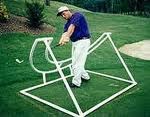IGNORE EVERYONE - And 39 other keys to creativity is about developing creativity. However chapter two (below) possesses a great leadership lesson that needs to be shared. The idea doesn't have to be big. It just has to be yours.
We’ve all spend a lot of time being impressed by folks we’ve never met. Somebody featured in the media who’s got a big company, a big product, a big movie, a big bestseller. Whatever.
And we spend even more time trying unsuccessfully to keep up with them. Trying to start up our own companies, our own products, our own film projects, books, and whatnot.
I’m as guilty as anyone. I tried lots of different things over the years, trying desperately to pry my career out of the jaws of mediocrity. Some to do with business, some to do with art, etc.
One evening, after one false start too many, I just gave up. Sitting at a bar, feeling a bit burned out by work and by life in general, I just started drawing on the backs of business cards for no reason. I really didn't need a reason. I just did it because it was there, because it amused me in a kind of random, arbitrary way.
Of course it was stupid. Of course it was not commercial. Of course it wasn’t going to go anywhere. Of and utter waste of time. But in restrospect, it was this built-in futility that gave it its edge. Because it was the exact opposite of all the “Big Plans” my peers and I were used to making. It was so liberating not to have to think about all that, for a change.
It was so liberating to be doing something that didn't have to have some sort of commercial angle, for a change.
It was so liberating to be doing something that didn't have to impress anybody, for a change.
It was so liberating to be free of ambition, for a change.
It was so liberating to be doing something that wasn't a career move, for a change.
It was so liberating to be doing something that belonged just to me and no one else, for a change.
It was so liberating to feel complete sovereignty, for a change. To feel complete freedom, for a change. To have something that didn’t require somebody else’s money, or somebody else’s approval, for a change.
And of course, it was then, and only then, that the outside world started paying attention.
The sovereignty you have over your work will inspire far more people than the actual content ever will.
How your own sovereignty inspires other people to find their own sovereignty, their own sense of freedom and possibility, will give the work far more power than the work’s objective merits ever will.
Your idea doesn’t have to be big. It just has to be yours alone. The more the idea is yours alone, the more freedom you have to do something really amazing.
The more amazing, the more people will click with your idea. The more people click with your idea, the more this little thing of yours will snowball into a big thing.
That’s what doodling on the backs of business cards taught me.
Pick up IGNORE EVERYONE - And 39 other keys to creativity is about developing creativity, by Hugh MacLeod.








